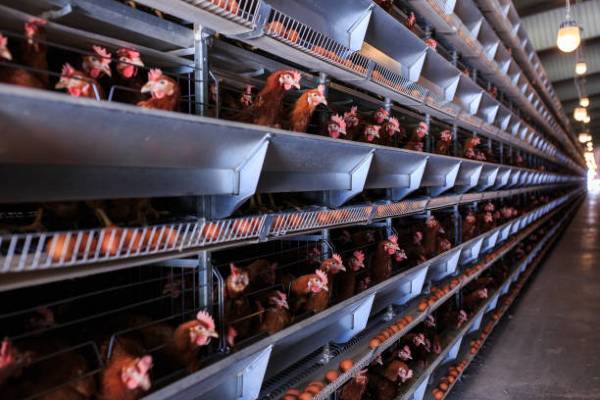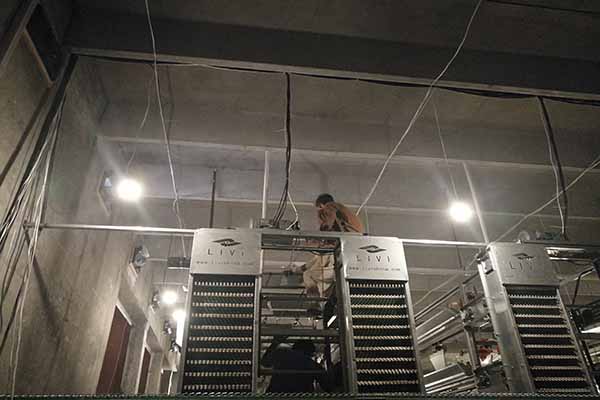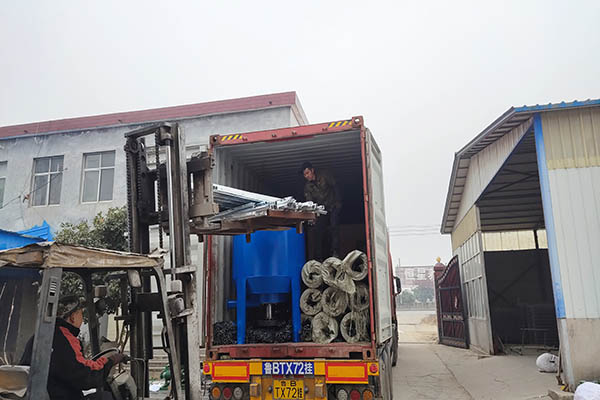Automated Disease Prevention Equipment in Uganda Chicken Farms: Revolutionizing Poultry Health
Time : 2025-04-27
As the poultry industry in Uganda continues to grow, so does the need for efficient and effective disease prevention strategies. One of the most innovative approaches to tackling this challenge is the integration of automated disease prevention equipment in chicken farms. In this article, we’ll delve into how this technology is making a significant impact on poultry health and farm productivity.

The Challenge of Disease in Chicken Farms
Chicken farms in Uganda, like many others around the world, face a constant battle against diseases that can decimate their flocks. These diseases not only pose a threat to the welfare of the birds but also to the economic viability of the farms. Traditional methods of disease prevention and control, such as vaccination and manual observation, have their limitations.
Manual observation is time-consuming and prone to human error. Vaccinations, while effective, require careful administration and regular follow-up to ensure the flock remains protected. The need for a more advanced and reliable solution is evident.
Introducing Automated Disease Prevention Equipment
Enter automated disease prevention equipment. This cutting-edge technology is designed to monitor and manage poultry health in real-time, providing a proactive approach to disease prevention. Here’s how it works:
- Temperature Monitoring: Automated systems can continuously track the temperature of the birds, alerting farmers to any deviations that could indicate the onset of a fever, a common symptom of various diseases.
- Weight Tracking: Regular weighing of the birds can help detect weight loss, which might be a sign of illness or poor nutrition.
- Health Analysis: Advanced algorithms can analyze data from various sources to predict potential disease outbreaks and recommend appropriate interventions.
This technology isn’t just about monitoring; it’s also about intervention. Automated systems can be programmed to respond to spe cific conditions, such as adjusting ventilation or automatically isolating sick birds to prevent the spread of disease.
cific conditions, such as adjusting ventilation or automatically isolating sick birds to prevent the spread of disease.
Benefits of Automated Disease Prevention Equipment
Implementing automated disease prevention equipment in Uganda chicken farms brings several key benefits:
- Enhanced Health Monitoring: Continuous monitoring reduces the risk of undetected illness, leading to healthier flocks.
- Improved Productivity: By preventing disease outbreaks, farms can maintain higher production levels and reduce downtime.
- Cost Savings: Early detection and intervention can save on vet bills and the cost of treating an entire flock.
- Sustainability: Reducing the reliance on antibiotics and other treatments promotes more sustainable farming practices.
Case Studies: Success Stories in Uganda
Several chicken farms in Uganda have already implemented automated disease prevention equipment and are reaping the benefits. Here are a couple of success stories:
Case Study 1: The Kanyali Chicken Farm
Located in the central region of Uganda, the Kanyali Chicken Farm has seen a dramatic improvement in its flock health since adopting automated monitoring systems. The farm’s owner, Mr. John Nsubuga, reports that the system has helped to reduce the incidence of disease by 30%, resulting in increased profits and job security for his workers.
Case Study 2: The Nakasero Chicken Farm
The Nakasero Chicken Farm, which specializes in free-range chicken production, has also experienced positive outcomes. By integrating automated temperature and weight monitoring, the farm has seen a decrease in mortality rates and an increase in egg production, leading to a stronger market presence.

The Future of Automated Disease Prevention in Uganda Chicken Farms
The future of automated disease prevention in Uganda chicken farms looks promising. As technology continues to advance, we can expect even more sophisticated systems that will help farmers manage their flocks more effectively. Some of the potential future developments include:
- Machine Learning: Systems that use machine learning to improve their predictive abilities and adapt to changing farm conditions.
- Remote Monitoring: The ability to monitor chicken farms from anywhere in the world, using mobile devices and the internet.
- Blockchain Technology: Ensuring the integrity and security of health data and transactions.
As the poultry industry in Uganda grows, the adoption of automated disease prevention equipment is likely to become more widespread. This technology isn’t just a luxury; it’s a necessity for modern, sustainable poultry farming.
Conclusion
Automated disease prevention equipment is revolutionizing the way poultry health is managed in Uganda. By providing continuous monitoring, early detection, and timely intervention, this technology is helping farmers maintain healthy flocks, increase productivity, and reduce costs. As the industry evolves, we can expect even more innovative solutions to emerge, making Uganda’s chicken farms a beacon of efficiency and sustainability.











